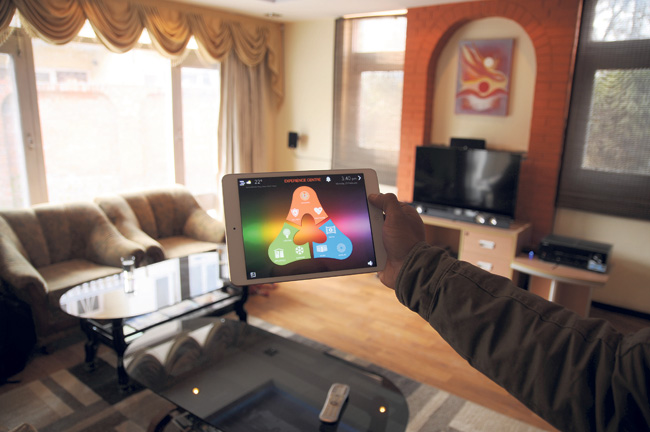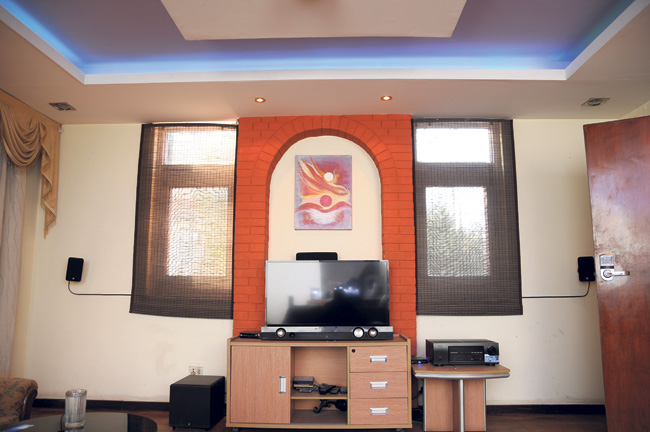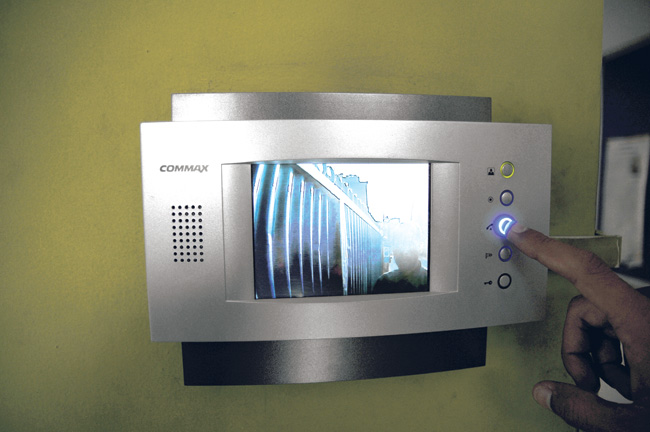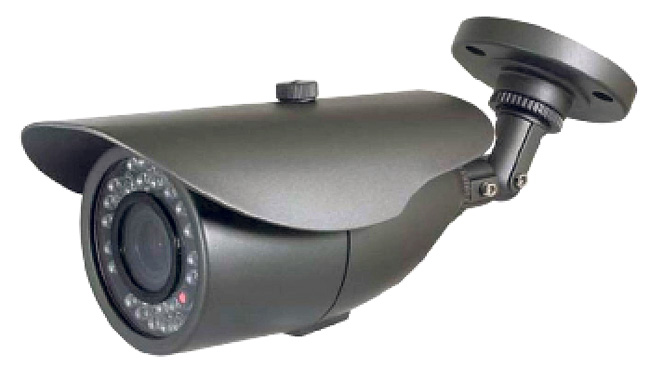Smart homes
Putting your home to work for you
Imagine coming home from a long day’s work and you open the door, and the lights immediately turn on a shade past dim – just the way you like it. It’s 8:00 pm by the time you freshen up and as you sit down in the living room to relax, your sound system automatically turns on your favorite tune. Once upon a time, this notion of domestic bliss may have been purely within the realm of science fiction, but not anymore.
Similarly, when you are not home, you do find small elements of doubt starting to creep into your mind. Did I actually close the front door? Did I switch off the lights? Is the gas stove still on? Does it happen all the time? Well, that can be managed too.
Whether you want to be pampered in and by your house or you wish to have a complete peace of mind when you are outside, it is all possible with the rise of smart home networking or, as it is also known, home automation.
Keyur Krishna Shrestha, electronic engineer and managing director at Bipassana International, has been on Kathmandu’s circuit since 2009 playing the enabler and providing those who are looking for these comforts, security, and conveniences in their houses, hotels as well as boardrooms. In fact, they were the ones who introduced Digital Living Experience for the first time in Nepal so The Week, caught up with Shrestha to explore the ways in which they have been helping their clients simplify their life through technology.
Could you explain the concept of home automation?
Home automation is a technology introduced to make your life easier. The typical smart home automation would feature seamlessly integrated security systems, lighting, energy management, curtain control, home theatre, and other electronics and appliances, controlled through an app in your multiple devices.
I always say we sell experiences, rather than products. I believe clients have to come here to our office and experience what we are trying to do to their homes. This is not only about owning fancy gadget. These systems are integrated to respond to our lifestyle. Once somebody witnesses the level of convenience these technology can provide a family, you automatically warm up to the idea of home automation.
What sort of clients do you usually have?
So far, the majority have been industrialists and businessmen. The required budget is a big factor in home automation. However, the scene has changed since we began in 2009. Advancement in technology and product design in the last few years has made these technologies accessible to many. Thus we are looking forward to reach out the masses and expand our clientele this year.
So could you say home automation has become more affordable?
If we were to compare to what it was back six or so years ago, yes. We have more affordable products now. Back in 2009, the cost of my projects was almost always more than Rs 1,000,000. These days we have solutions for less than Rs 200,000. With more brands in the game, we have more options these days.
Similarly, a home owner can always choose to pick or drop the available technologies. Some people tend to think home automation means you have to get the whole house integrated but that’s not the case. We map out projects as per the clients need so if you want just the curtains to be automated, that can also be managed.
Also in the last few years, we have had more wireless technology. There is no need to wire the entire house. This makes it easier and quicker to install the systems. Though again, the client can choose. Let’s take the curtains as an example again. You can integrate them to automatically open at a certain time in the morning but if the option is too costly, you can skip that and simply make them operable with a switch on the wall.
Do you think people have misconceptions about smart homes?
I have had an overweight gentleman tell me they don’t want to consider the option because it might make him lazier. It’s still the funniest myth I have heard so far. These technologies are about convenience. If you are scared of being lazy, you could easily hit the gym.
Then there are some who believe that having more technical things in their homes will complicate their lives. I say this depends on who and how you have integrated your house and installed the systems. If the company is reliable, this shouldn’t be an issue. Also some seem to be afraid of the infrared rays from the security sensors. No, they won’t affect your health or give you cancer of any sort. They aren’t X-rays. It might take awhile for Nepalis to become accustomed to the concept of home automation.
What about repair and maintenance issues?
As is the case with electronic goods, you have to spend a decent amount of money on your gadgets. A good investment will guarantee you good performance. Working in our country though, my experience has taught me to be extra wary of the voltage fluctuation. This is perhaps the biggest danger to the gadgets. There are, however, simple ways to secure the outlets.
In worse case scenarios, where the machine does stop functioning, there are alternatives for such emergencies. For example, the motorized gates have a key and can be opened manually. Most of the gadgets in the security system come with their backups as well. So these matters can be discussed and solved beforehand.
Light automation
 This is my favorite feature. Lighting automation offers one of the most useful and aesthetic feature that can be installed in a house. Our lighting automation will enable home owners to control important lights in the house at the press of a button. Control your home’s lighting by schedule, motion detection, sunrise, sunset, alarm activation and more. Just a touch of a button on your app can turn every light in a room or the whole house on or off. This also enables you to check if anybody at your home left his/her room lights on from anywhere.
This is my favorite feature. Lighting automation offers one of the most useful and aesthetic feature that can be installed in a house. Our lighting automation will enable home owners to control important lights in the house at the press of a button. Control your home’s lighting by schedule, motion detection, sunrise, sunset, alarm activation and more. Just a touch of a button on your app can turn every light in a room or the whole house on or off. This also enables you to check if anybody at your home left his/her room lights on from anywhere.
Light integration starts from Rs 15,000. The cost increases as per the number of lights and switches.
Motorized solution
 You have the option of motorizing your curtains/ blinds, main gate, garage shutters and so on to ease the chores around your house. Basically, a press of a button from your smart devices, be it your phone or tablet can give you full control of these aspects of your home. The motors are safe to operate and even come with manual override options as a precaution. They can also be programmed to operate based on time of the day or event.
You have the option of motorizing your curtains/ blinds, main gate, garage shutters and so on to ease the chores around your house. Basically, a press of a button from your smart devices, be it your phone or tablet can give you full control of these aspects of your home. The motors are safe to operate and even come with manual override options as a precaution. They can also be programmed to operate based on time of the day or event.
Motorized swing gate cost around Rs 200,000 whereas motorized sliding gate can be installed for Rs 150,000.
The option to motorize your curtains starts from Rs 35,000.
Digital entertainment
 This is a revolutionary way to enjoy all your media, all around the house. According to Shrestha, home theaters are apparently the most popularly requested feature at the company. They perform acoustic analysis, give sound treatment, and help design home theaters with exceptional performance. You can also wirelessly stream your digital content such as movies, pictures, songs etc. from your smart phone or tablet.
This is a revolutionary way to enjoy all your media, all around the house. According to Shrestha, home theaters are apparently the most popularly requested feature at the company. They perform acoustic analysis, give sound treatment, and help design home theaters with exceptional performance. You can also wirelessly stream your digital content such as movies, pictures, songs etc. from your smart phone or tablet.
The price for quality sound system for the home theatre starts at Rs 50,000. The sound treatments come at additional costs.
Security automation
 Integrate your security system with video door phone, cctv, wireless digital door locks, door sensors and invisible infrared parameter sensors on the ground floor.
Integrate your security system with video door phone, cctv, wireless digital door locks, door sensors and invisible infrared parameter sensors on the ground floor.

Energy management
There is a way to make sure that energy is utilized in your home only when required. This includes your lights, air-condition and other electronic equipment as well. You can place sensors so that you don’t have to waste electricity where it is not needed. This allows the lights, AC and so on to automatically switch off when they are not being used. Further, you can also choose to integrate this system throughout the entire house or in specific individual areas only.
TEXT: PRIYANKA GURUNG
PHOTOS: PRATIK RAYAMAJHI